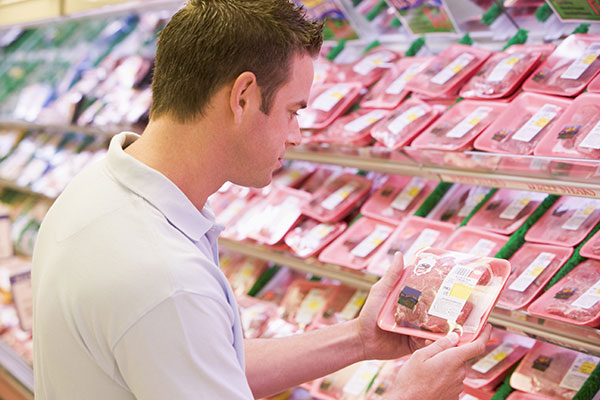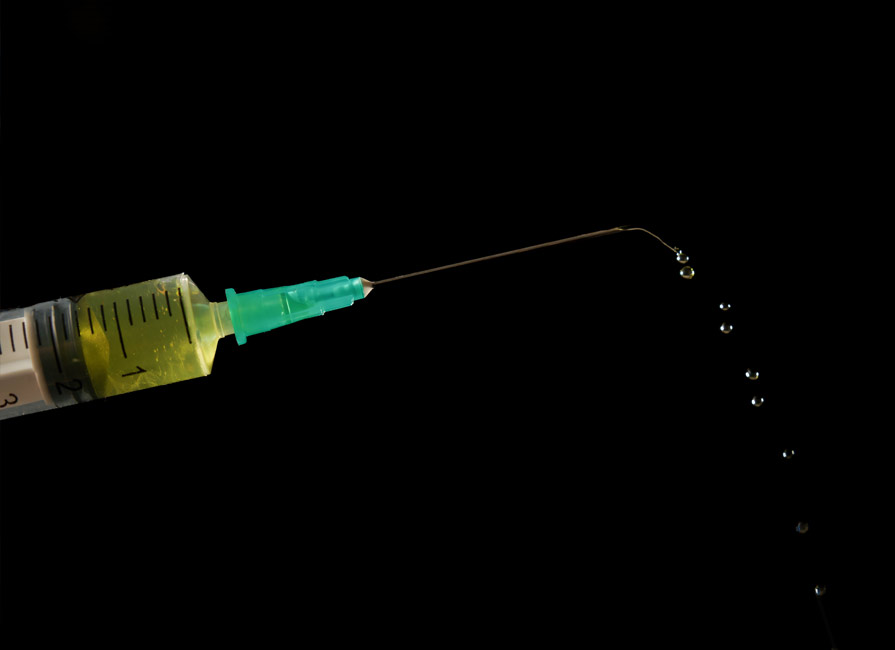Editor’s Note: This thought-provoking article on the challenges of prohibiting antibiotics in organic systems was…

“Antibiotic-Free”: Industrial Farming with a Nice-Sounding Label
Food label claims about antibiotic use are a hot topic in the U.S. According to the Wall Street Journal, sales of “antibiotic-free” labeled chicken at U.S. retailers rose 34% by value in 2013-14, driven by public concerns about antibiotic use in food animal production.
Earlier this month, McDonald’s announced that, within two years, all chicken served at its 14,000 U.S. restaurants will come from farms that raise birds without antibiotics that are important to human medicine. The statement was welcomed by leading U.S. public health and environmental advocates (who are campaigning to ban antibiotics in farming) as a major step in combating the threat of antibiotic-resistant bacteria, and follows earlier initiatives. Last year, for example, Chick-fil-A announced plans to phase out chicken raised with antibiotics; Perdue Foods and Tyson Food both said they would no longer use antibiotics in their chicken hatcheries; and Cargill announced it had removed growth promoting antibiotics from its turkey flocks.
Why the sudden interest in antibiotic-free food? U.S. intensive farms use more antibiotics per pound of meat than any other nation (nearly 80% of antibiotics produced in the U.S. are used in food animal production—over 32 million pounds in 2013 alone). However, unlike the UK and Europe, there is very little regulation in the U.S., and many antibiotics are routinely included in animal feed/water without the need for veterinary oversight or prescription. These drugs are not used to treat sick animals: they are used at subtherapeutic levels to prevent inevitable disease among the billions of chickens, cattle, and pigs raised intensively each year in overcrowded, stressful, and insanitary conditions. Scientists around the world—including the U.S. Centers for Disease Control and Prevention—now emphatically link this routine nontherapeutic use of antibiotics as a key cause of dangerous antibiotic-resistant bacteria. So surely these industry-led antibiotic initiatives are a positive step to preserving life-saving antibiotics?
Unfortunately, the antibiotic-free label is nothing but green washing. The industry’s response to what can only be described as a short-sighted public campaign to ban antibiotics in farming (led primarily by well-meaning public health groups) has morphed into a misleading multi-million dollar marketing ploy that’s running out of control.
Take McDonald’s recent statement about only sourcing chicken “raised without antibiotics that are important to human medicine.” Sounds great, but closer examination of their plans reveals nothing but media puff. According to McDonald’s Global Vision for Antimicrobial Stewardship in Food Animals policy statement (which is referenced in the recent press release), the human drugs they intend to prohibit from their supply chain are “not presently approved for use in food animals.” In other words, McDonald’s is triumphantly prohibiting drugs that would probably never be used in food animal production. But it gets better. What is McDonald’s doing about classes of antimicrobial drugs identified as critically important to human medicine and approved for food animal use? Absolutely nothing: McDonald’s simply states that the use of these crucial drugs is contingent “on local regulations, as well as veterinary authorization (after confirmation of diagnosis) or use under a veterinary care program.” Again, it seems nothing has changed. Nor is McDonald’s doing anything to address conditions on suppliers’ farms that might promote disease (and hence the use of antimicrobials). McDonald’s explains they simply “encourage” suppliers to adopt better systems and management—nothing more. Sadly, most of the initiatives launched by other industry players are equally ineffectual.
Perhaps the greatest concern is that the promotion of antibiotic-free initiatives by industry and advocates alike as an ‘easy solution’ to the threat of antibiotic-resistant bacteria may ultimately undermine vital efforts to adopt new legislation, such as PAMTA (The Preservation of Antibiotics for Medical Treatment Act), which would limit the misuse of antibiotics across all U.S. intensive livestock operations—not just a minority.
Buying or promoting antibiotic-free products won’t solve antibiotic resistance or aid sustainable food production. Why?
First, because it encourages a two-tier food system where most industrial livestock operations will continue to misuse antibiotics. If you take the antibiotic-free label at face value you’d probably assume that sick animals must never be treated with antibiotics. Clearly, such a position is neither ethically acceptable nor sustainable, so antibiotic-free programs invariably require farmers to treat sick animals with antibiotics if it is the only way to avoid pain and suffering. The problem is they also dictate that if antibiotics are used the farmer can no longer sell meat, milk or eggs from the treated animal(s) into antibiotic-free supply chains. We now have a situation in the U.S. where a minority who can afford it are choosing antibiotic-free protein from animals that have never been treated with antibiotics under the false assumption they are doing the “right” thing for their health, for animal welfare, and for the environment, while the vast majority who cannot have to make do with “second class” products from animals that are treated with antibiotics. Note that meat processors can always market any antibiotic-treated animals through their conventional mainstream product lines and still make a profit—exactly where else do people think “treated” food ends up?! Simply by maintaining a premium for antibiotic-free products, the meat processors and retailers ensure the majority continue to buy “affordable” meat, eggs and dairy from mainstream industrial farms where routine antibiotics are still used. It’s a win-win for the major meat processors and retailers: By offering some antibiotic-free products at a premium price the industry can fool people into not only thinking they are buying a “better” product, but that the industry is actually doing something about antibiotics, thus negating calls for legislation (such as PAMTA) that would end the indiscriminate antibiotic abuse across all intensive farming systems in the U.S.
Second, the antibiotic-free label does absolutely nothing to change the industrial confinement paradigm. The farming operations supplying the major antibiotic-free brands are still intensive confinement systems, with all the associated welfare and environmental concerns. Antibiotic-free beef comes from cattle confined by the thousands on dirt feedlots and finished on inappropriate high-grain diets; antibiotic-free chickens are raised in vast intensive indoor broiler operations that rely on rapid-growth breeds; and antibiotic-free pigs spend their lives indoors in confinement systems where mutilations such as tail docking are routine management practices. And because antibiotic-free farmers must sell any sick animals they treat with antibiotics into other markets, there is a very strong economic incentive to withhold treatments, resulting in further potential health and welfare issues. Bear in mind, too, that antibiotic-free programs do not impose additional requirements on farmers to improve waste or environmental management practices. So we’re just as likely to see the vast greenhouse gas-emitting manure lagoons on antibiotic-free farms, with all the associated pollution risks to waterways and groundwater systems. And with no additional requirements to give animals access to pasture or to consider the environmental impact of the animals’ diet, antibiotic-free farms are still entirely reliant on fertilizer-hungry commodity feeds, such as genetically modified soy and corn, with all the inherent environmental impacts associated with monocultural intensive grain farming. It’s business as usual, only with a nicer label.
No farming system can guarantee animals will never get sick. Of course, this should always be the goal, and raising animals outdoors on pasture and in ways that will maximize natural immunity and minimize stress will get pretty close. But farmers still need antibiotics in the tool box as a last resort to treat individual sick animals (never to mask poor management). Used this way, pain and suffering in farm animals is minimized, the risk of disease is reduced, and the efficacy of antibiotics—for humans and livestock—is protected. It’s not rocket science and many thousands of farms across the world already follow this approach. Ok, so it isn’t as catchy as “antibiotic-free” farming, but it doesn’t need to be. We don’t routinely sprinkle antibiotics on our food to prevent disease; we (chiefly) use them as a last resort to treat illness. Farmers can use antibiotics in a safe and responsible manner to treat individual sick animals, just as in human medicine. Explained like this, it makes perfect sense.
Unfortunately, the misguided campaign for antibiotic-free production in the U.S. has played directly into the hands of the industry—and could squander the opportunity to achieve real change. What we urgently need is robust legislative action to end antibiotic abuse on every U.S. farm as soon as possible, not just a minority. This kind of legislation already exists in other parts of the world—particularly in Europe. And while these controls are far from perfect, the U.S. can learn from their progress and avoid their mistakes.
Peter Mundy

